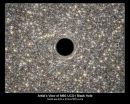(Press-News.org) Washington, DC (September 17, 2014) – Receiving an email that claims you are the recipient of a large sum of money from an unknown deceased relative immediately raises a red flag. These email scams are often trashed or filtered through spam folders. But what about on social networks where there is no filter? Where people can learn about your personal life with a few clicks? A recent study published in the Journal of Computer-Mediated Communication by a researcher at the University at Buffalo – State University of New York found that people who habitually use Facebook were more susceptible to being victims of online scams.
Arun Vishwanath (Associate Professor of Communication, University at Buffalo – State University of New York) subjected 150 college students to real phishing attacks on Facebook. At the beginning of the semester students were asked to participate in an online survey on general technology use, buried among these questions were measures for their Facebook usage habits. Six weeks after the survey, the participants were located on Facebook and each student was sent a friend-request from a phony Facebook account. Two weeks later, an information-request was sent to them from that profile. This communication asked for the participants' student ID number, e-mail username, and date of birth.
Vishwanath found that Facebook users in the sample who had large social networks, used Facebook more frequently than their peers, and those who were unable to control their impulsive use of the platform were were much more likely to inadvertently accept the friend-request and hand over their personal information when phished. Facebook by design promotes repeated interaction with its platform. It makes users keep posting updates and checking-in on other people's feeds, and in many ways fosters habit formation. The findings of the study reveal that people who tend to engage in too much of such Facebook use, when coupled with an inability to regulate their behavior, are particularly vulnerable to social media phishing.
Social media phishing is the attack mode of choice among cyber criminals and has been implicated in crimes ranging from home invasion to cyber bullying, illegal impersonation, and espionage. This is the first to subject Facebook users to a real social media phishing attack and assess how individual Facebook use-patterns and habits influence their deception-likelihood.
"Habitual Facebook use is an understudied issue and as such there are no interventions aimed at correcting it. We need to develop techniques to identify individuals who posses this problem early on, and we now know its behavioral and personality markers," said Vishwanath. "We need to next develop remedial interventions that target such individuals and help them develop better cyber-hygiene. This would not only help them but it will also protect all of us from phishing attacks, since the Pew Center has estimated that the average Facebook user can reach anywhere from 70,000-150,000 other people through their friends networks."
INFORMATION:
"Habitual Facebook Use and its Impact on Getting Deceived on Social Media," by Arun Vishwanath; Journal of Computer-Mediated Communication DOI: 10.1111/jcc4.12100
Contact: To schedule an interview with the author or receive a copy of the research, please contact John Paul Gutierrez, jpgutierrez@icahdq.org.
About ICA
The International Communication Association is an academic association for scholars interested in the study, teaching, and application of all aspects of human and mediated communication. With more than 4,300 members in 80 countries, ICA includes 27 Divisions and Interest Groups and publishes the Communication Yearbook and five major, peer-reviewed journals: Journal of Communication, Communication Theory, Human Communication Research, Communication, Culture & Critique, and the Journal of Computer-Mediated Communication. For more information, visit http://www.icahdq.org.
Habitual Facebook users more likely to be caught in phishing scams
Users with large social networks, frequent Facebook use, and inability to regulate media use are more susceptible to accepting strangers as friends and giving them information
2014-09-17
ELSE PRESS RELEASES FROM THIS DATE:
Failed Medicare payments law remains relevant
2014-09-17
PROVIDENCE, R.I. [Brown University] — As Congress adjourns this month for the November elections, one of the killed bills senators will step over on their way out the chamber door will be the Sustainable Growth Rate (SGR) Repeal and Medicare Provider Payment Modernization Act of 2014. In a new commentary in the journal JAMA Surgery, Dr. Eli Adashi recounts what he and other advocates saw as the merits of the originally bipartisan bill. The perennial trouble with how Medicare pays doctors will return for the next Congress, Adashi said, and broader trends in health care practice ...
A massive black hole has been found at the center of an ultra-compact galaxy
2014-09-17
A team of researchers, including an astronomer from Michigan State University, has discovered a huge black hole at the center of an ultra-compact galaxy – the smallest galaxy known to contain one.
The galaxy, known as M60-UCD1, was discovered last year by a team led by Jay Strader, MSU assistant professor of physics and astronomy. Strader was a member of the team that found the black hole.
The findings are detailed in the recent edition of the journal Nature.
The finding suggests that other ultra-compact galaxies also may contain massive black holes. And that those ...
New non-invasive technique could revolutionize the imaging of metastatic cancer
2014-09-17
Bioluminescence, nanoparticles, gene manipulation – these sound like the ideas of a science fiction writer, but, in fact, they are components of an exciting new approach to imaging local and metastatic tumors. In preclinical animal models of metastatic prostate cancer, scientists at Virginia Commonwealth University Massey Cancer Center, VCU Institute of Molecular Medicine and Johns Hopkins Medical Institutions have provided proof-of-principle of a new molecular imaging approach that could revolutionize doctors' ability to see tumors that have metastasized to other sites ...
Hubble helps find smallest known galaxy containing a supermassive black hole
2014-09-17
Astronomers using data from NASA's Hubble Space Telescope and ground observation have found an unlikely object in an improbable place -- a monster black hole lurking inside one of the tiniest galaxies ever known.
The black hole is five times the mass of the one at the center of our Milky Way galaxy. It is inside one of the densest galaxies known to date -- the M60-UCD1 dwarf galaxy that crams 140 million stars within a diameter of about 300 light-years, which is only 1/500th of our galaxy's diameter.
If you lived inside this dwarf galaxy, the night sky would dazzle ...
Space: The final frontier… open to the public
2014-09-17
Historically, spaceflight has been reserved for the very healthy. Astronauts are selected for their ability to meet the highest physical and psychological standards to prepare them for any unknown challenges. However, with the advent of commercial spaceflight, average people can now fly for enjoyment. The aerospace medicine community has had very little information about what medical conditions or diseases should be considered particularly risky in the spaceflight environment, as most medical conditions have never been studied for risk in space — until now.
The aerospace ...
NASA releases IRIS footage of X-class flare
2014-09-17
On Sept. 10, 2014, NASA's newest solar observatory, the Interface Region Imaging Spectrograph, or IRIS, mission joined other telescopes to witness an X-class flare – an example of one of the strongest solar flares -- on the sun. Combing observations from more than one telescope helps create a much more complete picture of such events on our closest star. Watch the movie to see how the flare appears different through the eyes of IRIS than it does through NASA's Solar Dynamics Observatory.
The movie shows IRIS imagery focused in on material at around 60,000 Kelvin (107,500 ...
Power isn't enough: Study reveals the missing link for effective leadership
2014-09-17
NEW YORK—With the National Football League in full damage-control mode, there are many questions about how the NFL's leader handled the Ray Rice case. Was Goodell ignoring the pleas of stakeholders—former NFL players, the media and domestic violence groups—when deciding on a two game penalty? The answer may lie in a study out today by Columbia Business School.
The research, just published in Social Psychological and Personality Science, finds that leaders who fail to take into account their audiences' perspective have a far greater propensity to bungle the issue and conversation. ...
Reducing traffic congestion with wireless system
2014-09-17
At the Intelligent Transportation Systems World Congress last week, MIT researchers received one of the best-paper awards for a new system, dubbed RoadRunner, that uses GPS-style turn-by-turn directions to route drivers around congested roadways.
In simulations using data supplied by Singapore's Land Transit Authority, the researchers compared their system to one currently in use in Singapore, which charges drivers with dashboard-mounted transponders a toll for entering congested areas.
The Singapore system gauges drivers' locations with radio transmitters mounted on ...
NASA sees Odile soaking Mexico and southwestern US
2014-09-17
Tropical Storm Odile continues to spread moisture and generate strong thunderstorms with heavy rainfall over northern Mexico's mainland and the Baja California as well as the southwestern U.S. NASA's Tropical Rainfall Measuring Mission or TRMM satellite measured rainfall rates from space as it passed over Odile.
Odile had weakened to a tropical storm with winds of about 55 knots (63.3 mph) when the TRMM satellite flew over on September 16, 2014 at 0917 UTC (2:19 a.m. PDT). Odile was still well organized and TRMM's Precipitation Radar (PR) measured rain falling at a rate ...
Doing science just got cheaper -- and faster
2014-09-17
Furnishing a research lab can be pretty expensive. Now a team led by an engineer at Michigan Technological University has published an open-source library of designs that will let scientists slash the cost of one commonly used piece of equipment: the syringe pump.
Syringe pumps are used to dispatch precise amounts of liquid, as for drug delivery or mixing chemicals in a reaction. They can also cost hundreds or even thousands of dollars.
Joshua Pearce and his team of Michigan Tech students published the library of free syringe-pump designs, which anyone can make on a ...
LAST 30 PRESS RELEASES:
Efficient stochastic parallel gradient descent training for on-chip optical processors
Liquid crystal-integrated metasurfaces for an active photonic platform
Unraveling the efficiency losses and improving methods in quantum dot-based infrared up-conversion photodetectors
A novel deep proteomic approach unveils molecular signatures affected by aging and resistance training
High-intensity spatial-mode steerable frequency up-converter toward on-chip integration
Study indicates that cancer patients gain important benefits from genome-matched treatments
Gift to UCR clinic aims to assist local unhoused population
Research breakthrough on birth defect affecting brain size
Researchers offer US roadmap to close the carbon cycle
Precipitation may brighten Colorado River’s future
Identifying risks of human flea infestations in plague-endemic areas of Madagascar
Archaea can be picky parasites
EPA underestimates methane emissions from landfills, urban areas
Feathers, cognition and global consumerism in colonial Amazonia
Satellite images of plants’ fluorescence can predict crop yields
Machine learning tool identifies rare, undiagnosed immune disorders through patients’ electronic health records
MD Anderson researcher Sharon Dent elected to prestigious National Academy of Sciences
Nonmotor seizures may be missed in children, teens
Emergency departments frequently miss signs of epilepsy in children
Unraveling the roles of non-coding DNA explains childhood cancer’s resistance to chemotherapy
Marshall University announces new clinical trial studying the effect of ACL reconstruction on return to play in sports
New York State is vulnerable to increasing weather-driven power outages, with vulnerable people in the Bronx, Queens and other parts of New York City being disproportionately affected
Time-restricted eating and high-intensity exercise might work together to improve health
Simulations of agriculture on Mars using pea, carrot and tomato plants suggest that intercropping, growing different crops mixed together, could boost yields in certain conditions
New computer algorithm supercharges climate models and could lead to better predictions of future climate change
These communities are most vulnerable to weather-related power outages in New York State
New strategy could lead to universal, long-lasting flu shot
Mystery behind huge opening in Antarctic sea ice solved
Brain imaging study reveals connections critical to human consciousness
Do earthquake hazard maps predict higher shaking than actually occurred?
[Press-News.org] Habitual Facebook users more likely to be caught in phishing scamsUsers with large social networks, frequent Facebook use, and inability to regulate media use are more susceptible to accepting strangers as friends and giving them information



